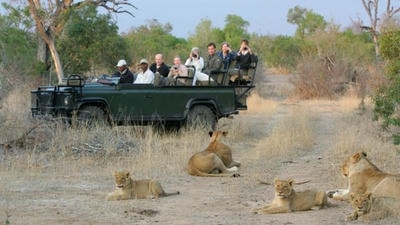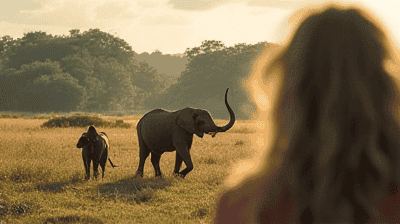
Wildlife sanctuaries serve as crucial havens for animals in distress, providing a safe environment for rehabilitation and protection from exploitation. However, the rise of tourism has brought both opportunities and challenges for these sanctuaries. As more people become interested in eco-tourism and wildlife experiences, it is essential for sanctuaries to navigate the fine line between educating the public and avoiding exploitation of the animals they protect.
A wildlife sanctuary is a protected area where animals can live in a natural habitat with minimal human interference. These facilities focus on rescuing and rehabilitating animals that have been victims of poaching, illegal trade, or other forms of cruelty. Sanctuaries provide shelter, medical care, and the opportunity for animals to thrive in an environment that promotes their well-being.
Wildlife sanctuaries play a vital role in conservation efforts by:
Rescue and Rehabilitation: Sanctuaries offer refuge for animals rescued from dire situations, providing them with the care they need to recover.
Education and Awareness: Sanctuaries educate the public about wildlife conservation, the challenges facing various species, and the importance of biodiversity.
Research Opportunities: Many sanctuaries engage in research that informs conservation strategies and helps improve animal welfare practices.
Habitat Protection: By maintaining large tracts of land, wildlife sanctuaries contribute to the preservation of ecosystems crucial for various species.

Tourism can provide essential funding for wildlife sanctuaries, helping them cover operational costs and support conservation efforts. When managed ethically, tourism can enhance public awareness and encourage people to support wildlife conservation. However, unregulated tourism can lead to numerous challenges.
As tourism grows, so does the risk of exploitation. Several factors contribute to this dilemma:
Animal Welfare Concerns: Some sanctuaries may prioritize profit over animal welfare, engaging in practices that put animals at risk. This includes allowing intrusive interactions or exhibiting animals in unnatural conditions.
Misinformation and Misrepresentation: Tourists may be misled about the sanctuaries' true purpose, leading them to support facilities that do not align with ethical standards.
Environmental Impact: Increased foot traffic and infrastructure developments to accommodate tourists can degrade natural habitats, affecting both wildlife and ecosystem integrity.
Commercialization of Wildlife: The commodification of animals can lead to unethical practices, such as breeding animals for profit or creating spectacles that do not prioritize animal welfare.
To ensure that wildlife sanctuaries promote ethical tourism and avoid exploitation, several strategies can be implemented:
Wildlife sanctuaries should develop comprehensive mission statements and goals that emphasize animal welfare, education, and conservation. These statements should guide all operations and clarify the sanctuary’s focus for visitors.
Animal welfare should always be the top priority. This includes:
Sanctuaries should establish guidelines that limit direct interactions between visitors and animals. This approach helps avoid stress on the animals and ensures that they can live as naturally as possible. Alternatives, such as observing animals in their enclosures or through guided tours, can provide enriching experiences for visitors without compromising animal welfare.
Educational programs can enhance visitors’ understanding of wildlife conservation and the importance of ethical practices. By providing information about the animals and their habitats, sanctuaries can foster a deeper appreciation and commitment among visitors to conservation efforts.
Wildlife sanctuaries should establish strict regulations governing their operations, including:
Partnering with established conservation organizations can enhance the credibility of wildlife sanctuaries. Collaborations can lead to access to resources, funding, and shared knowledge that further support ethical tourism practices.
To minimize the environmental impact of tourism, sanctuaries should adopt sustainable practices, such as:
Rather than focusing on entertainment, sanctuaries should curate experiences that promote appreciation, understanding, and compassion toward animals. This may include educational talks, guided nature walks, and behind-the-scenes tours that offer insight into animal care and rehabilitation.
Involving local communities in the sanctuary's operations and decision-making processes can foster a sense of ownership and responsibility. This engagement can also help create economic opportunities for locals, reducing reliance on wildlife exploitation.
Wildlife sanctuaries should regularly assess their practices and impact on animals, communities, and the environment. These evaluations can identify areas for improvement and foster a culture of continuous learning and adaptation.

While wildlife sanctuaries play a crucial role in responsible tourism, travelers also have a responsibility to support ethical practices. Here are ways in which tourists can contribute positively:
Before visiting a wildlife sanctuary, conduct research to ensure that it prioritizes animal welfare and ethical practices. Look for reviews, certifications, and endorsements from reputable conservation organizations.
As a visitor, it is essential to respect the sanctuary's rules and the animals’ space. Avoid engaging in behaviors that could stress or harm animals, such as feeding them or trying to touch them.
When traveling to wildlife sanctuaries, choose accommodations, restaurants, and tour operators that prioritize responsible and sustainable practices. Supporting ethical businesses helps reinforce a culture of conservation in the region.
Use your experiences to advocate for wildlife conservation upon returning home. Share your travel stories on social media and encourage others to consider ethical tourism options.
Many wildlife sanctuaries offer volunteer opportunities that allow visitors to contribute directly to animal care and conservation efforts. Volunteering can provide invaluable hands-on experience while supporting the sanctuary's mission.
As the interest in wildlife tourism continues to grow, there is a significant opportunity for wildlife sanctuaries to lead the way in promoting ethical practices. Several trends may shape the future of ethical tourism in these sanctuaries:
Travelers are becoming more conscious of the ethical implications of their choices, leading to a demand for transparency in animal care practices. Sanctuaries that openly share their policies and methods will foster trust and attract ethical travelers.
Technology can play a vital role in enhancing visitors' experiences while minimizing the impact on animals. Virtual reality experiences, educational apps, and online platforms for donations or sponsorships can enhance engagement without the need for physical interactions.
As more travelers seek sustainable experiences, wildlife sanctuaries that prioritize ethical practices will likely benefit from an increase in eco-tourism. Organizations that successfully align their operations with conservation efforts will attract responsible travelers seeking authentic experiences.
In the future, wildlife sanctuaries may increasingly collaborate with other organizations, governments, and grassroot movements to develop holistic conservation strategies that benefit wildlife and local communities.
Community involvement in wildlife sanctuaries will become more pronounced, with local communities taking an active role in management and operations. This approach will help create sustainable livelihoods while protecting wildlife.

Wildlife sanctuaries have the potential to foster ethical tourism that prioritizes animal welfare, conservation, and education. By implementing responsible practices and engaging travelers in meaningful ways, these sanctuaries can avoid exploitation while promoting appreciation for wildlife. As both sanctuary operators and tourists share the responsibility for ethical tourism, fostering a culture of respect and empathy for the animals in our care becomes paramount. Together, we can protect wildlife and create a future where ethical tourism thrives.